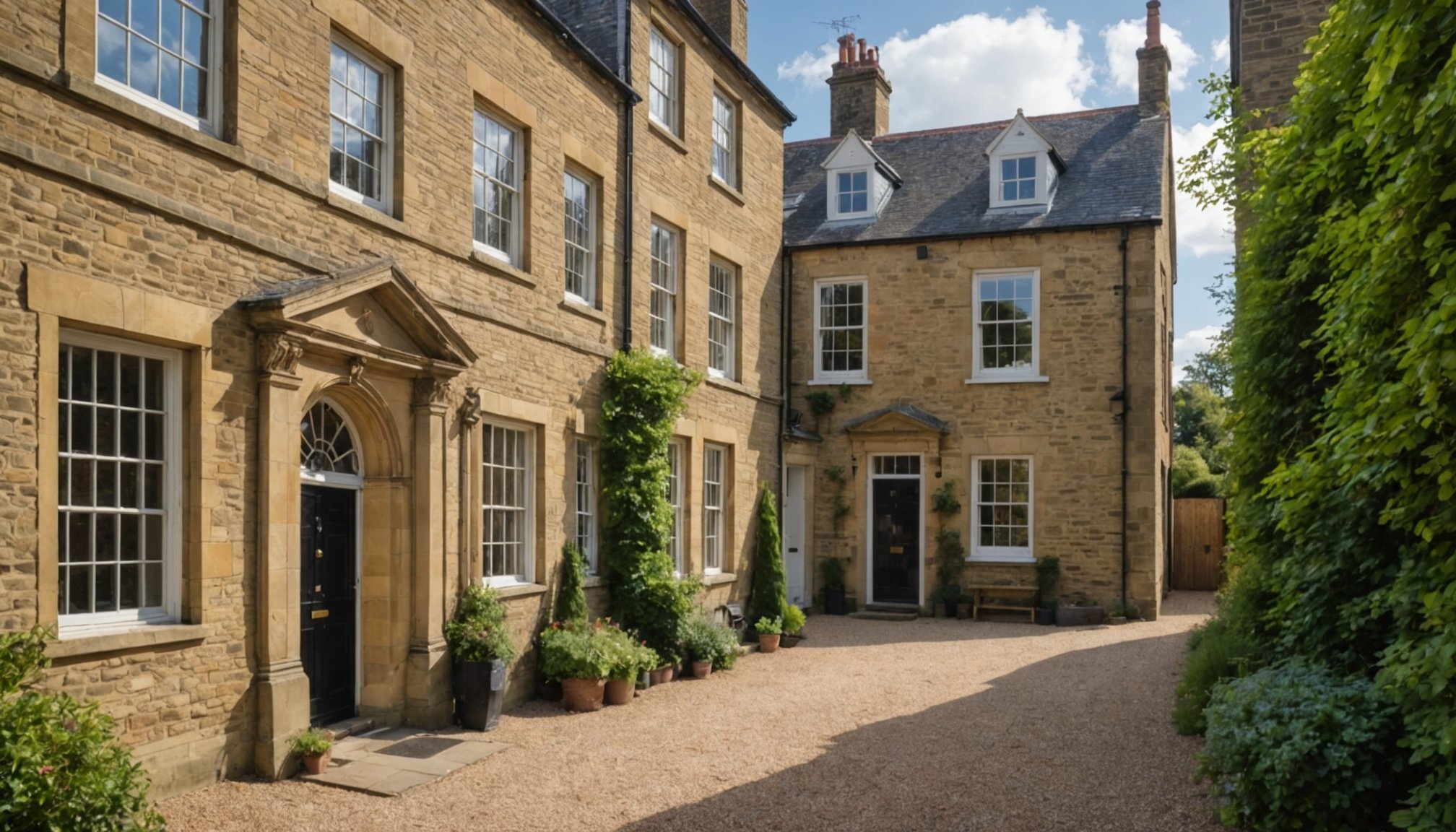Understanding Historic Listed Buildings
Historic building regulations play a crucial role in preserving our heritage. What defines a historic listed building? These structures are identified based on historical significance, architectural uniqueness, or cultural importance. The listing criteria ensure that buildings with exceptional features are preserved for future generations. This classification often comes with specific preservation laws.
The listing process involves an assessment to determine the building’s historical value. Once a building is listed, regulations dictate how it can be altered. Owners should be aware of these rules as they impact ownership and renovation rights. Key regulations include restrictions on structural alterations, the use of non-traditional materials, and changes to the building’s façade.
Also read : Essential Steps to Safeguard Your Privacy When Relocating in the UK
Ownership of a historical building entails adhering to specific renovation regulations, which might limit potential changes. Such laws may influence not only the aesthetics but also the materials used during renovations. Understanding these requirements is essential for maintaining the historical integrity while also complying with legal expectations. Therefore, navigating these intricate historic building regulations necessitates thorough knowledge and sensitivity to both historical and practical considerations.
Legal Requirements for Renovation
Renovating a historic listed building involves specific planning permissions and building regulations that must be adhered to. Understanding these legal obligations is crucial for any owner aiming to make changes. Different permissions are needed based on the type and extent of alterations planned. For instance, structural changes or extensions usually require comprehensive planning approval to ensure the building’s historical integrity is not compromised.
Also to discover : Ultimate Guide to Safely Packing and Relocating Your Extensive Book Collection Across the UK
Building regulations tailored for historic properties often focus on materials and methods used in renovations. Certain materials may be mandated to preserve the original aesthetic and structural form. Using inappropriate materials or altering the original design without approval can result in legal challenges.
Moreover, owners have legal obligations to maintain safety and accessibility standards. These include ensuring that any updates meet modern safety codes while respecting the building’s historic character. In such cases, expert consultation with heritage professionals is recommended to ensure compliance and safeguard architectural integrity.
Ultimately, a good understanding of these guidelines not only ensures legal compliance but also supports the maintenance of the building’s historical essence for future generations.
Best Practices for Modern Adaptation
Adapting a historic listed building to include modern amenities can enhance its value while preserving its unique character. Integrating these conveniences responsibly requires careful planning to maintain the building’s integrity. One approach is to focus on sustainable restoration methods that respect both the environment and historical structure.
Utilizing adaptive reuse strategies, owners can transform spaces without significant alterations to vital architectural features. This involves repurposing existing elements as part of the building’s new utility, such as converting an old factory into residential lofts while retaining original facades or structural beams.
Incorporating sustainable practices, like using energy-efficient systems or environmentally friendly materials, ensures that the restoration aligns with modern sustainability goals. These updates not only make the building more habitable but also contribute to ecological well-being. To demonstrate successful adaptations, case studies can showcase examples where historic buildings have been modernized effectively. These scenarios provide insights into the challenges faced and overcome, fostering innovation in preserving our architectural heritage.
Overall, respect for the original design coupled with thoughtful, eco-conscious upgrades typifies best practices in adapting historic buildings, ensuring their relevance and functionality for future generations.
Funding Options for Renovation
Exploring diverse funding options is crucial for owners of historic properties aiming to undertake renovations. One primary avenue is applying for grants for historic properties, which are often provided by both government bodies and private foundations. Organizations like Historic England and the National Trust frequently offer financial assistance to support the maintenance of architectural heritage.
In addition to grants, exploring financing options such as loans tailored for restoration projects can be beneficial. Some financial institutions offer specific loan products for historic property renovations, providing flexible terms and competitive interest rates. It’s essential to research and compare these options to find the most suitable fit for each project.
Restoration funding can also be effectively managed by aligning with specific preservation goals. Owners are advised to develop a comprehensive budgeting plan that encompasses all aspects of the restoration process. This plan should account for potential unexpected expenses, ensuring the project remains on track financially.
By combining various funding sources, owners can effectively navigate the financial landscape of historic building renovation, securing the necessary resources to preserve and enhance their property’s historical significance.
Preserving Architectural Features
Preservation of architectural features is crucial to maintaining the authenticity of historic buildings. These features, often embedded with cultural and historical narratives, require specific restoration techniques to safeguard their original essence. The meticulous process starts with identifying such elements, which can range from ornate woodwork to period-appropriate façades. Proper architectural conservation involves evaluating the building’s condition and historical context to guide the preservation strategy.
Restoration techniques employ methods tailored to the building’s materials. For stonework, approaches like stone patching and repointing are essential. For wood structures, traditional joinery and surface treatments help retain original features. Expert advice is indispensable to ensure any restoration work aligns with historical accuracy.
When assessing features for preservation, consider historical significance, structural stability, and aesthetic contribution. This assessment informs decisions on restoration priorities, balancing the building’s heritage with modern safety requirements. Awareness and understanding of these elements are fundamental. Hence, engaging skilled professionals experienced in restoration techniques secures the architectural legacy for future generations. The intertwining of thoughtful preservation methods with historical respect underpins the enduring charm of historic listed buildings.
Benefits of Living in a Historic Listed Building
Historic listed buildings offer a distinct blend of architectural heritage and unique living experiences. Residents often appreciate the intricacies and charm these properties exude, from grand facades to detailed interior features. These buildings frequently embody a rich historical narrative, contributing to one’s sense of living history.
Living in such properties also fosters community engagement. Dwelling in a historic edifice enhances community pride, encouraging participation in preservation initiatives. It presents opportunities to connect with neighbours over shared interests in maintaining the architectural legacy. This sense of belonging can be incredibly rewarding, strengthening community bonds.
Additionally, owning a historic property might elevate the potential for increased property value. The rarity and uniqueness of these buildings can raise their desirability among potential buyers, thus boosting community status and property worth. When maintained properly, they serve as enduring symbols of cultural and historical significance, adding value beyond the monetary.
By embracing architectural heritage and engaging with the community, residents not only preserve history but also enhance their own living experiences. The legacy upheld by these buildings makes them cherished, vibrant parts of any neighbourhood.
Resources for Historic Building Owners
Owning a historic building is a unique privilege that comes with the responsibility of maintaining its historical essence. Support is available through a variety of resources. Preservation societies play a vital role in offering guidance and support. These organizations provide valuable expert consultation on restoration techniques and best practices. Keeping abreast with these resources ensures informed decisions are made during the renovation process.
Local organizations also offer important services, working to safeguard the community’s cultural heritage. They often have programs or initiatives designed to help property owners navigate the specific needs of historic buildings. Engaging with these groups not only provides knowledge but also fosters community connections.
For comprehensive support, it is crucial to consult with experts specializing in historic renovations. Their insights can be invaluable when it comes to understanding the intricacies of presiding over a listed building. These professionals offer tailored advice, ensuring that any work done respects the building’s historical context. Accessing such expertise helps preserve the architectural legacy while accommodating necessary modern updates, ultimately benefiting both the owner and the community at large.
Case Studies and Expert Insights
Exploring case studies uncovers the remarkable transformation of historic listed buildings. These examples highlight how thoughtfully considered renovations can preserve architectural integrity while embracing modern functionality. By examining successful projects, owners gain valuable insights into the balance between preserving history and accommodating contemporary needs.
Expert interviews further illuminate the restoration process. Specialists share common challenges encountered in maintaining listed buildings, offering advice on overcoming hurdles such as adhering to preservation laws or managing unexpected structural issues. Their insights serve as indispensable guides, empowering owners to navigate complex restoration endeavors with confidence.
Moreover, insights from historical restoration examples showcase diverse approaches to conserving original features while integrating modern amenities. For instance, a dilapidated Victorian warehouse converted into loft apartments might retain its striking brick façade alongside energy-efficient upgrades. Such transformations not only safeguard cultural heritage but also enhance property utility.
Owners considering renovation projects should prioritize learning from these case studies and expert perspectives. The lessons drawn from these experiences underscore the importance of careful planning, informed decision-making, and collaboration with skilled professionals. This knowledge is crucial for achieving successful and harmonious integrations of past and present architectural elements.











